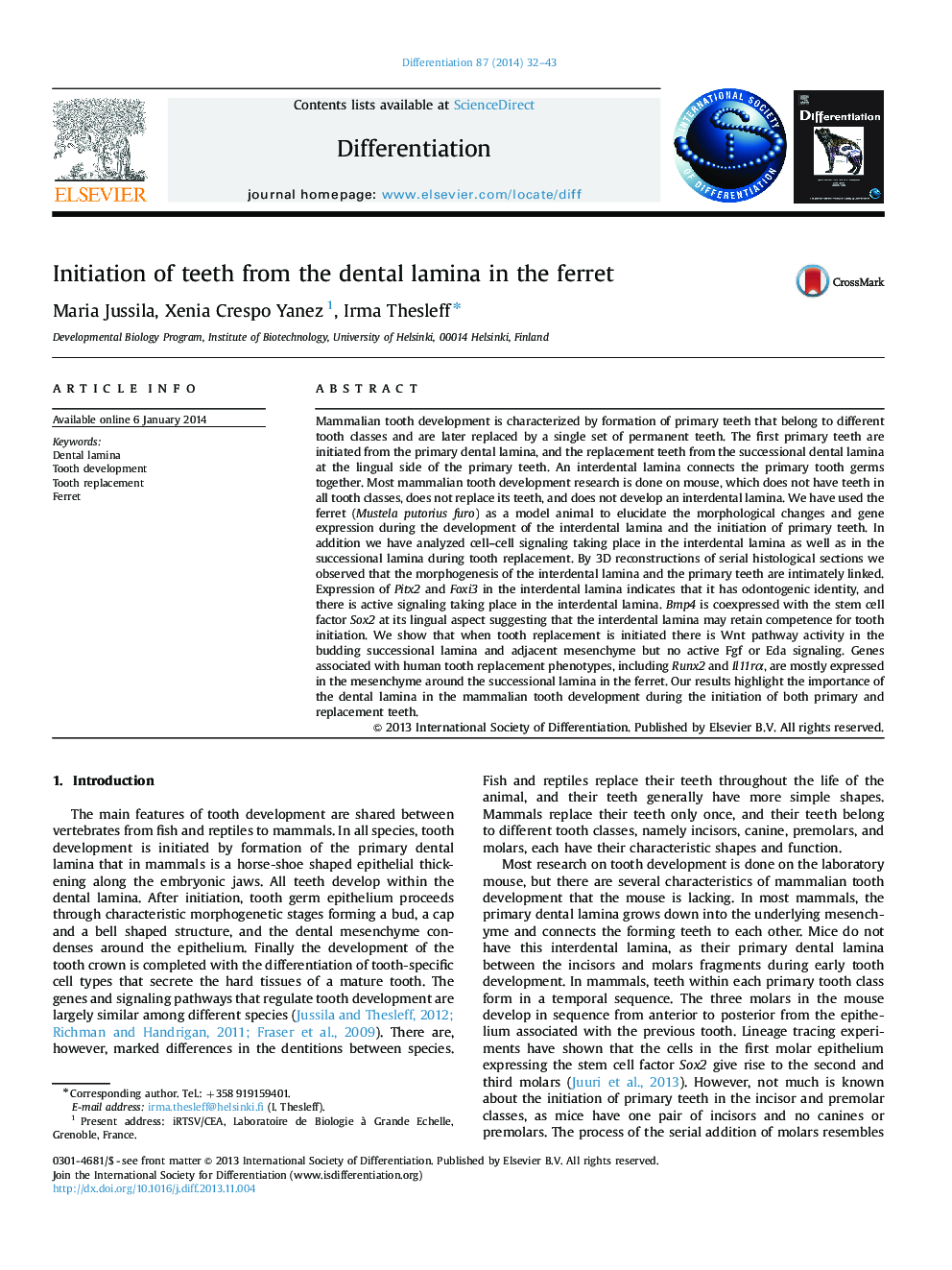| Article ID | Journal | Published Year | Pages | File Type |
|---|---|---|---|---|
| 8436379 | Differentiation | 2014 | 12 Pages |
Abstract
Mammalian tooth development is characterized by formation of primary teeth that belong to different tooth classes and are later replaced by a single set of permanent teeth. The first primary teeth are initiated from the primary dental lamina, and the replacement teeth from the successional dental lamina at the lingual side of the primary teeth. An interdental lamina connects the primary tooth germs together. Most mammalian tooth development research is done on mouse, which does not have teeth in all tooth classes, does not replace its teeth, and does not develop an interdental lamina. We have used the ferret (Mustela putorius furo) as a model animal to elucidate the morphological changes and gene expression during the development of the interdental lamina and the initiation of primary teeth. In addition we have analyzed cell-cell signaling taking place in the interdental lamina as well as in the successional lamina during tooth replacement. By 3D reconstructions of serial histological sections we observed that the morphogenesis of the interdental lamina and the primary teeth are intimately linked. Expression of Pitx2 and Foxi3 in the interdental lamina indicates that it has odontogenic identity, and there is active signaling taking place in the interdental lamina. Bmp4 is coexpressed with the stem cell factor Sox2 at its lingual aspect suggesting that the interdental lamina may retain competence for tooth initiation. We show that when tooth replacement is initiated there is Wnt pathway activity in the budding successional lamina and adjacent mesenchyme but no active Fgf or Eda signaling. Genes associated with human tooth replacement phenotypes, including Runx2 and Il11rα, are mostly expressed in the mesenchyme around the successional lamina in the ferret. Our results highlight the importance of the dental lamina in the mammalian tooth development during the initiation of both primary and replacement teeth.
Related Topics
Life Sciences
Biochemistry, Genetics and Molecular Biology
Cancer Research
Authors
Maria Jussila, Xenia Crespo Yanez, Irma Thesleff,
